 Both McNab and Yoranian are originated from United States. McNab may grow 34 cm / 14 inches higher than Yoranian. McNab may weigh 27 kg / 60 pounds more than Yoranian. Both McNab and Yoranian has almost same life span. McNab may have less litter size than Yoranian. Both McNab and Yoranian requires Low Maintenance.
Both McNab and Yoranian are originated from United States. McNab may grow 34 cm / 14 inches higher than Yoranian. McNab may weigh 27 kg / 60 pounds more than Yoranian. Both McNab and Yoranian has almost same life span. McNab may have less litter size than Yoranian. Both McNab and Yoranian requires Low Maintenance.
Basic Information
undefined
United States
United States
Life Span:
13 - 15 Years
12 - 14 Years
Other Names:
McNab Shepherd, McNab Collie
Yorky Pom • Yorkie Pom • Yorkie-Pom • Yorki-pom • Yorkipom • Yoranian Terrier • Porkie • Pom-Yorkie
Colors Available:
Black or red with white feet, white tipped tails and white markings around the face
crcream to apricot
Coat:
Short and dense
thin Thick, short/medium, shiny, wirehaired double coat
Temperament:
Affectionate, Alert, Cheerful, Curious, Friendly, Gentle, Independent, Intelligent, Lively, Loving, Loyal, Outgoing, Playful, Protective, Responsive, Social, Stubborn, Territorial
Curious, Energetic, Intelligent, Loving
Grooming:
Low Maintenance
Low Maintenance
New Owners Friendly:
Yes
Yes
History
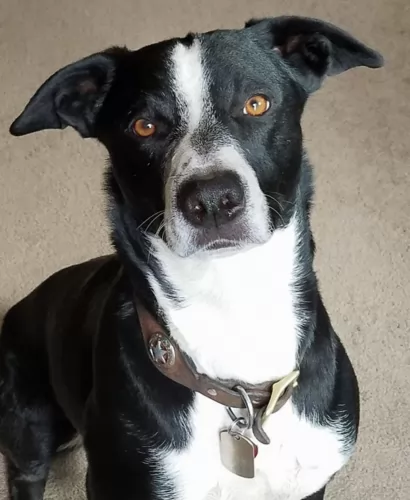 The attractive McNab dog is also known as the McNab Shepherd or McNab Collie. This very lively dog originated in the Mendocino region of Northern California, being specifically bred to withstand tough weather conditions and rough terrain.
The attractive McNab dog is also known as the McNab Shepherd or McNab Collie. This very lively dog originated in the Mendocino region of Northern California, being specifically bred to withstand tough weather conditions and rough terrain.
The dog is becoming popular outside of California now. A Scottish rancher with the surname McNab left Scotland and arrived in California in the 19th century. He crossed Scottish Border Collies with Shepherd dogs and the ranchers in California started using these dogs for herding livestock.
Today they are still being used as herding dogs in California and other countries. The dog isn’t recognized by the American Kennel Club. It was in 2014 that a group of McNab Shepherd breeders established the McNab Shepherd Registry so as to work towards the advancement of the McNab Shepherd.
The Yoranian is a mixed breed, hybrid or “designer” breed. They are a cross between the Pomeranian and the Yorkshire Terrier and are very small dogs. They were developed in Yorkshire, England in the 19th century. It is a very playful, family dog that is not registered with any pure breed club such as the American Kennel Club or AKC.
Description
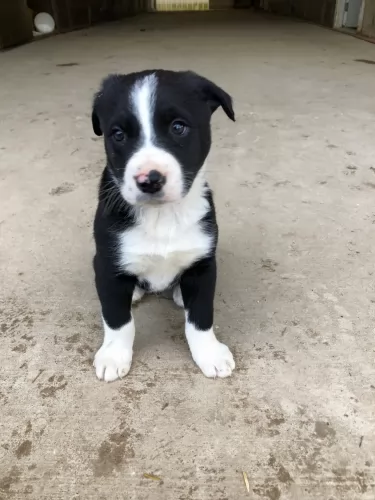 The McNab Dog is a medium-sized working dog. The appearance of this dog varies quite a bit. For instance you may come across a dog with erect ears or floppy ears or a long tail or one that is naturally bobbed.
The McNab Dog is a medium-sized working dog. The appearance of this dog varies quite a bit. For instance you may come across a dog with erect ears or floppy ears or a long tail or one that is naturally bobbed.
When it comes to size, you will find that between the males and females they stand at roughly 40 – 64cm and weigh anything from 14 – 30kg.
Most of these McNabs are black or red with white feet, white tipped tails and white markings around the face. The coat is weather resistant and fairly short and dense. You also get tri-colored McNabs. Eyes are usually a brown or copper color though you might find some with bluish eyes as well.
Temperament:
These are such intelligent dogs so with training and socialization you’ll find he is able to learn easily and quickly. He is a self assured dog, so he will respond well to an owner who is firm and fair, patient, kind and consistent.
He is best suited to life in the country as he needs lots of place to run around. If you don’t live on a farm, take the dog for long walks every day as he requires lots of exercise and mental stimulation. He is a loving family member too, getting along well with kids in the home as well as other pets. He is also a good guard- and watch dog, taking his job as protector of his human family very seriously.
The Yoranian is a toy breed, as are both its founding breeds. It checks in at only 7 pounds and stands only 6-10 inches tall. It can have medium or long fur in any combination of the parent’s colors including tan, black, blue or white. They have small ears that stand upright and erect, a small muzzle, medium tail and large round eyes. They can be long and slender like the Yorkshire Terrier or barrel shaped like the Pomeranian.
Characteristics
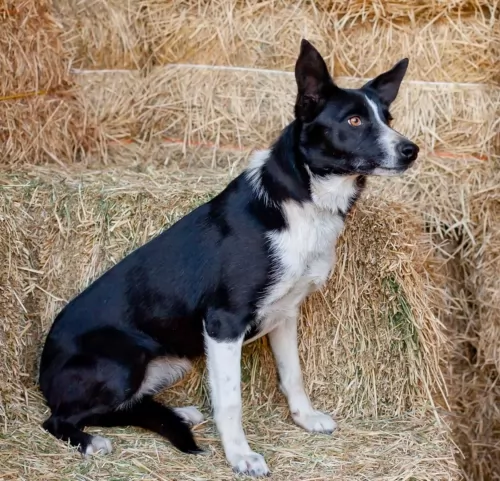 The McNab makes a splendid pet and is known to be even-tempered, being friendly and tolerant with his entire human family.
The McNab makes a splendid pet and is known to be even-tempered, being friendly and tolerant with his entire human family.
He gets on well with children in the home as well as other pets. He has always been a hard working pet and doubles up as being an excellent guard dog too. Those who have had the McNab as a pet say that you couldn’t get a more excellent family canine friend.
1.Children friendliness absolutely but monitor so that the dog does not get hurt. They are fragile.
2.Special talents – high energy and lots of enthusiasm
3.Adaptability – very adaptable small apartments are great.
4.Learning ability very high gets bored easily
Health Problems
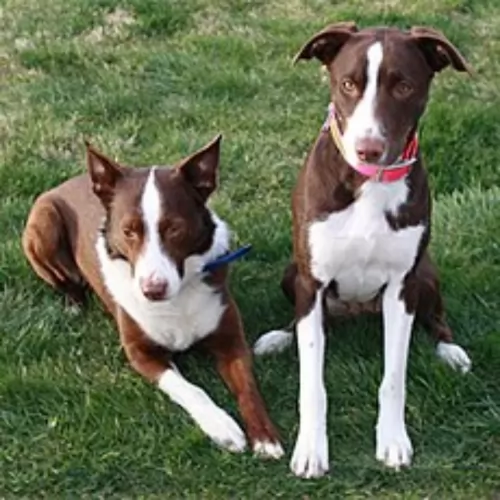 This dog doesn’t really have genetic health issues, but they can suffer with hip dysplasia, a problem that many dogs battle with, whether small or large, young or old.
This dog doesn’t really have genetic health issues, but they can suffer with hip dysplasia, a problem that many dogs battle with, whether small or large, young or old.
They can also suffer with epilepsy and an eye disease such as entropion where the lid of the eye is turned inwards. Check its ears and teeth regularly for infections and keep up to date with his vaccinations.
The McNab is a health dog breed so you aren't likely to face any of these common dog health issues.
The Yoranian has some medical challenges such as:
• A very fragile neck and back. They can be hurt easily.
• Low Blood Sugar must be monitored.
• Eye irritations and dry eyes without enough tear production.
• Dental issues with decay and loss of teeth.
• Patellar Luxation of slipped kneecaps causing lameness.
• Retinal Atrophy can lead to blindness.
Caring The Pet
Diet:
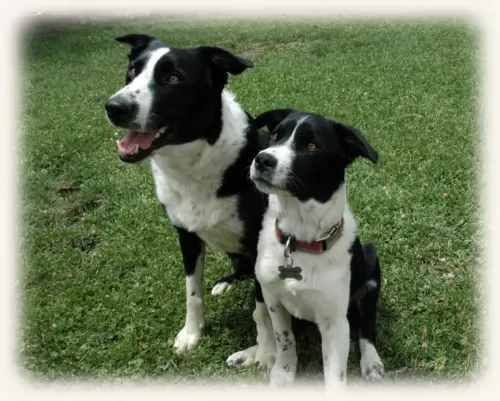 You can feed your McNab dog commercial dry kibble, but then you want to be sure its the best quality one. Buying inferior foods means that you’re getting a whole lot of ingredients in the food that are bad – sugar, salt, preservatives, fillers, colorants etc. Rather go for the best brands that will ensure that your dog is getting all the vitamins and minerals he needs.
You can feed your McNab dog commercial dry kibble, but then you want to be sure its the best quality one. Buying inferior foods means that you’re getting a whole lot of ingredients in the food that are bad – sugar, salt, preservatives, fillers, colorants etc. Rather go for the best brands that will ensure that your dog is getting all the vitamins and minerals he needs.
Homemade food is also important and foods such as boiled chicken, brown rice and pasta as well as cooked or raw vegetables chopped up and added to his dry kibble can make for a delicious, wholesome treat. It will be to his benefit if you can every now and then give him some raw meat as well. Make sure to see that he has a constant supply of fresh, cool water.
Exercise:
McNab Shepherds are very active dogs and they are going to require quite a bit of physical exercise as well as mental stimulation. They are dogs who have been used to herding livestock and he loves this busy life. It is why he wouldn’t be happy living in the city but is better suited to farm life or in a home with a large garden. Long walks and hikes will suit him as well as swimming and joining in every game there is.
Grooming:
The McNab is considered to be a low maintenance dog and grooming the short thick coat will be required twice a week. Always check around the eyes and ears as well as inside the mouth for problems and infections.
1 Feeding the puppy don’t overfeed and feed small pieces of toy dog food. 3-4 x per day ¼ cup daily
2.Feeding the adult don’t overfeed/ high quality adult toy dog food. Make sure pieces are small. ¼ to ½ cup daily
3.Points for Good Health – lots of energy and enthusiasm
4. Games and Exercises high energy and enthusiasm at least 2 walks a day.
loves to play inside
Comparison with other breeds
- Yoranian vs English Bulldog - Breed Comparison
- Yoranian vs German Shepherd - Breed Comparison
- Yoranian vs Golden Retriever - Breed Comparison
- Yoranian vs Labrador Retriever - Breed Comparison
- Yoranian vs West Highland White Terrier - Breed Comparison
- Yoranian vs French Bulldog - Breed Comparison
- Yoranian vs Beagle - Breed Comparison
- Yoranian vs Yorkshire Terrier - Breed Comparison
- Yoranian vs Poodle - Breed Comparison
- Yoranian vs Rottweiler - Breed Comparison
- Yoranian vs Boxer - Breed Comparison
- Yoranian vs English Pointer - Breed Comparison
- Yoranian vs Siberian Husky - Breed Comparison
- Yoranian vs Doberman Pinscher - Breed Comparison
- Yoranian vs American Bully - Breed Comparison
- Yoranian vs Abruzzenhund - Breed Comparison
- Yoranian vs Affenpinscher - Breed Comparison
- Yoranian vs Afghan Hound - Breed Comparison
- Yoranian vs Aidi - Breed Comparison
- Yoranian vs Airedale Terrier - Breed Comparison
- Yoranian vs Akbash Dog - Breed Comparison
- Yoranian vs Akita - Breed Comparison
- Yoranian vs Africanis - Breed Comparison
- Yoranian vs Askal - Breed Comparison
- Yoranian vs Atlas Terrier - Breed Comparison
- McNab vs English Bulldog - Breed Comparison
- McNab vs German Shepherd - Breed Comparison
- McNab vs Golden Retriever - Breed Comparison
- McNab vs Labrador Retriever - Breed Comparison
- McNab vs West Highland White Terrier - Breed Comparison
- McNab vs French Bulldog - Breed Comparison
- McNab vs Beagle - Breed Comparison
- McNab vs Yorkshire Terrier - Breed Comparison
- McNab vs Poodle - Breed Comparison
- McNab vs Rottweiler - Breed Comparison
- McNab vs Boxer - Breed Comparison
- McNab vs English Pointer - Breed Comparison
- McNab vs Siberian Husky - Breed Comparison
- McNab vs Doberman Pinscher - Breed Comparison
- McNab vs American Bully - Breed Comparison
- McNab vs Abruzzenhund - Breed Comparison
- McNab vs Affenpinscher - Breed Comparison
- McNab vs Afghan Hound - Breed Comparison
- McNab vs Aidi - Breed Comparison
- McNab vs Airedale Terrier - Breed Comparison
- McNab vs Akbash Dog - Breed Comparison
- McNab vs Akita - Breed Comparison
- McNab vs Africanis - Breed Comparison
- McNab vs Askal - Breed Comparison
- McNab vs Atlas Terrier - Breed Comparison
 Petzlover
Petzlover Both McNab and Yoranian are originated from United States. McNab may grow 34 cm / 14 inches higher than Yoranian. McNab may weigh 27 kg / 60 pounds more than Yoranian. Both McNab and Yoranian has almost same life span. McNab may have less litter size than Yoranian. Both McNab and Yoranian requires Low Maintenance.
Both McNab and Yoranian are originated from United States. McNab may grow 34 cm / 14 inches higher than Yoranian. McNab may weigh 27 kg / 60 pounds more than Yoranian. Both McNab and Yoranian has almost same life span. McNab may have less litter size than Yoranian. Both McNab and Yoranian requires Low Maintenance.  The attractive McNab dog is also known as the McNab Shepherd or McNab Collie. This very lively dog originated in the Mendocino region of Northern California, being specifically bred to withstand tough weather conditions and rough terrain.
The attractive McNab dog is also known as the McNab Shepherd or McNab Collie. This very lively dog originated in the Mendocino region of Northern California, being specifically bred to withstand tough weather conditions and rough terrain. The McNab Dog is a medium-sized working dog. The appearance of this dog varies quite a bit. For instance you may come across a dog with erect ears or floppy ears or a long tail or one that is naturally bobbed.
The McNab Dog is a medium-sized working dog. The appearance of this dog varies quite a bit. For instance you may come across a dog with erect ears or floppy ears or a long tail or one that is naturally bobbed. The McNab makes a splendid pet and is known to be even-tempered, being friendly and tolerant with his entire human family.
The McNab makes a splendid pet and is known to be even-tempered, being friendly and tolerant with his entire human family. This dog doesn’t really have genetic health issues, but they can suffer with hip dysplasia, a problem that many dogs battle with, whether small or large, young or old.
This dog doesn’t really have genetic health issues, but they can suffer with hip dysplasia, a problem that many dogs battle with, whether small or large, young or old. You can feed your McNab dog commercial dry kibble, but then you want to be sure its the best quality one. Buying inferior foods means that you’re getting a whole lot of ingredients in the food that are bad – sugar, salt, preservatives, fillers, colorants etc. Rather go for the best brands that will ensure that your dog is getting all the vitamins and minerals he needs.
You can feed your McNab dog commercial dry kibble, but then you want to be sure its the best quality one. Buying inferior foods means that you’re getting a whole lot of ingredients in the food that are bad – sugar, salt, preservatives, fillers, colorants etc. Rather go for the best brands that will ensure that your dog is getting all the vitamins and minerals he needs.